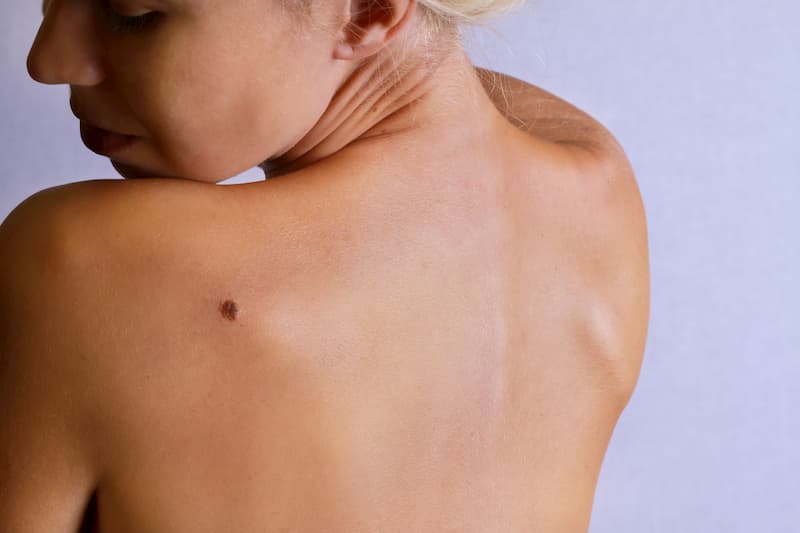Evaluate Your Skin for Cancer and Other Skin Issues

Did you know that more people in the United States are diagnosed with skin cancer than all other type of cancer combined? Skin cancer is by far the most common type of cancer, affecting 1 in 5 Americans by the age of 70. There is no doubt that these statistics are alarming, but there is good news: with at-home skin cancer checks and professional evaluations, you can significantly reduce your risk of becoming seriously ill from skin cancer.
Here is everything you need to know about potential early skin issues, evaluation steps, and why getting to know your skin is so important.
How to Conduct a Self-Exam for Skin Cancer
Skin cancer can take many different forms, which is why constantly checking your skin at home is critical. Early detection can often make skin cancer easier to treat. For example, when found early, there is a 99 percent, five-year survival rate for melanoma. If given the chance, wouldn’t you want to significantly raise your odds of recovery? At-home skin cancer checks are one of the easiest ways to do that.
How To Perform a Skin Self-Exam
To complete a full self-exam, you will first need a few supplies: a full-length mirror, a bright light, a hand mirror, two chairs (or stools), paper, pencil, and a blow-dryer.
- First, closely examine your face. Using one or both mirrors, make sure you can clearly view your nose, lips, mouth, and ears (both front and back).
- Inspect your scalp, using a mirror and a blow-dryer to visibly expose each section for easier viewing. A friend or family member can also be helpful during this part.
- Check your hands, including the palms and back, between your fingers, and under your fingernails. Work your way up to your wrists and forearms.
- Move in front of a full-length mirror, then scan your arms beginning at the elbows. Look at all sides of your upper arms, as well as your underarms.
- Then, assess the skin on your neck, chest, and torso.
- With your back facing the full-length mirror, use the hand mirror to examine your upper back. Be sure to include the back of your neck, your shoulders, and any parts of your upper arms you may have missed in the previous step.
- Continue using the two mirrors to examine your lower back, buttocks, and the backs of both your legs.
- Sit down in one of the chairs or stools, then prop up one leg on the other. Using the hand mirror as needed, examine from the waist down. Do not forget to check the sides as well as the front of each leg. Finally, scan your ankles and feet, including your toes, soles, and under the nails (remove nail polish).
The ABCDEs of Self-Exams for Skin Cancer
One of the deadliest types of skin cancer is melanoma, which can grow and spread at a shockingly rapid rate. Use the “ABCDE” rule to aid you in the early detection of melanoma:
- Asymmetry: If one part or side of a mole/birthmark does not match the other
- Borders: If the edges of a mole/birthmark appear blurred, irregular, or notched
- Colors: If the mole/birthmark is not a single consistent color
- Diameter: If the mole/birthmark is larger than ¼ inch in diameter
- Evolving: If the mole/birthmark changes in size, color, or shape
Smartphone Apps to Evaluate Skin Cancer
Today’s technology is evolving at a lightning-fast pace, so it may come as no surprise to learn that when it comes to skin cancer detection, there is an app for that. There are several smartphone apps that claim to aid in early detection, helping to track and even assess suspicious moles via telemedicine.
Miiskin
Using a mole-mapping approach, Miiskin analyzes your skin with a highly-magnified form of digital photography. These high-definition photos make it easy to spot even minute changes in specific moles or areas of the skin. With Miiskin, you can store skin evaluation photos (separate from your photo library), giving you a quick and effective way to detect suspicious changes.
UMSkinCheck
Created by researchers from the University of Michigan’s school of medicine, UMSkinCheck is an excellent option for anyone who is new to the process of self-exams. The app provides step-by-step instructions for a full-body skin cancer exam, featuring both written and graphic information. UMSkinCheck also offers the capabilities to track a history of any moles, growth, or lesions on your body and will send you reminder notifications for self-exams.
SkinVision
The SkinVision app operates using a machine-learning algorithm, breaking down the various layers of your uploaded images to provide nearly-instantaneous assessments. It’s one of the more advanced skin evaluation smartphone apps, and its developers claim that its undergone extensive refinements in the interest of accuracy. SkinVision is backed by a board of dermatologists, but still encourages users to pursue a professional opinion.
Keep in mind that while a smartphone app can be a useful way to evaluate skin from home, it is not a substitute for a professional evaluation.
Schedule Your Skin Cancer Evaluation at Dr. Michael J. Streitmann
Early skin cancer detections can make the difference between serious, malignant cancer and a small, removable growth – which is why both at-home and professional skin evaluations are so important. Taking a proactive role in your health by conducting regular at-home skin checks is an excellent idea, but it is also vital that you schedule regular check-ups with an experienced physician.
We understand during these uncertain times, health and wellness may not be your priority, however, identifying a possible problem early can make a difference in your life. If you have recently been diagnosed with skin cancer, Dr. Streitmann offers total reconstruction of affected skin areas. Contact Dr. Streitmann today to schedule an appointment at our Houston or Conroe office.
Image Credit: Getty/ ChesiireCat
